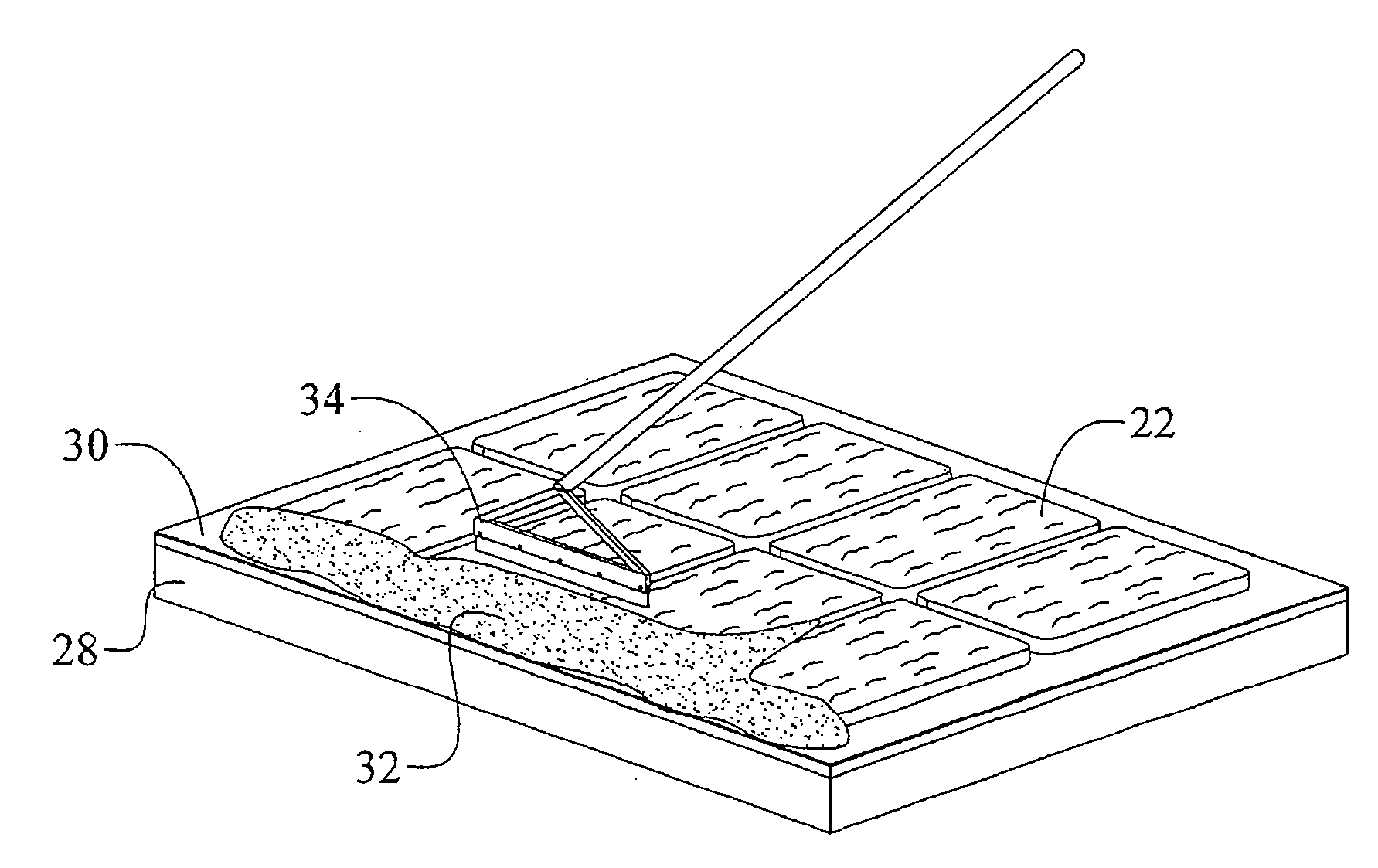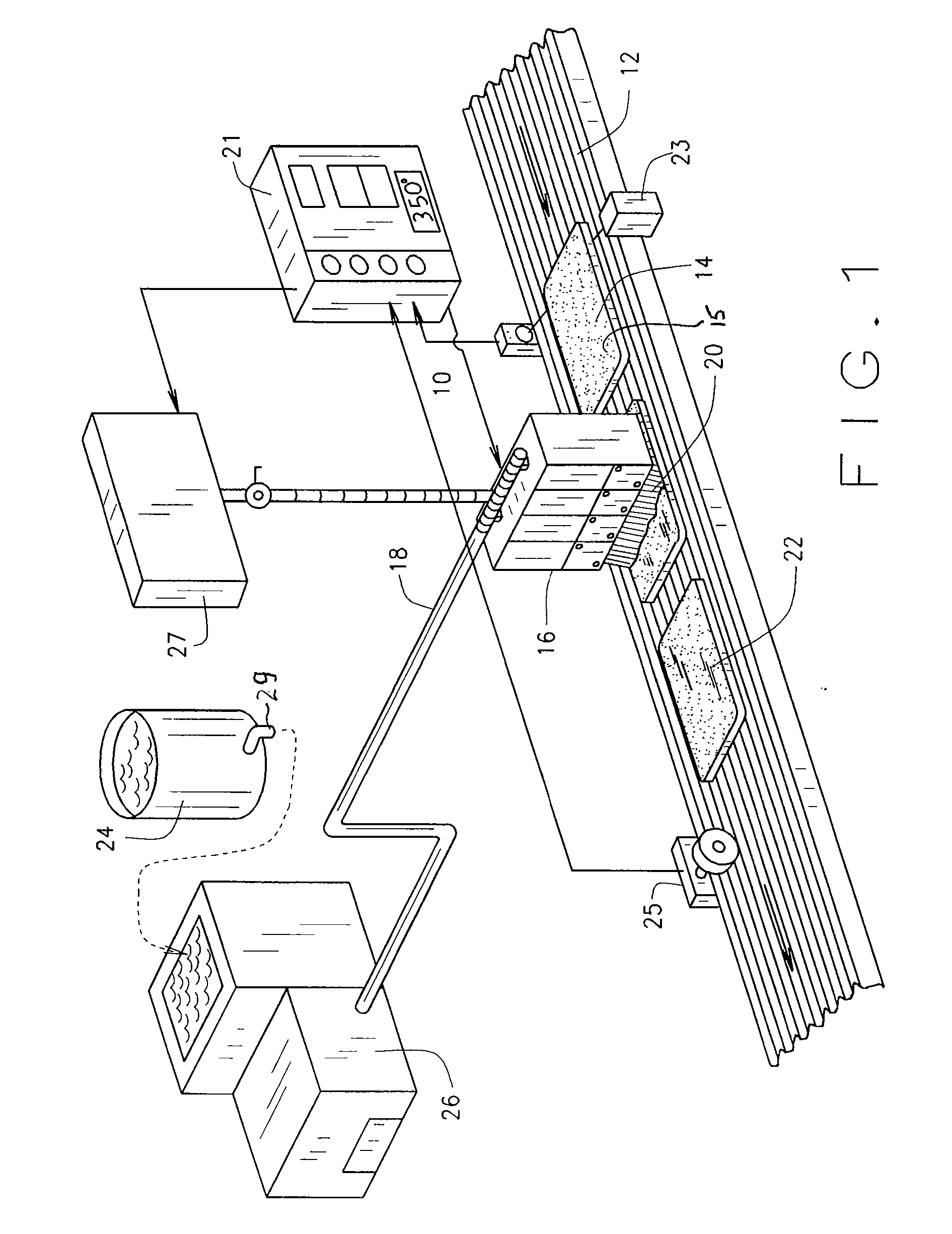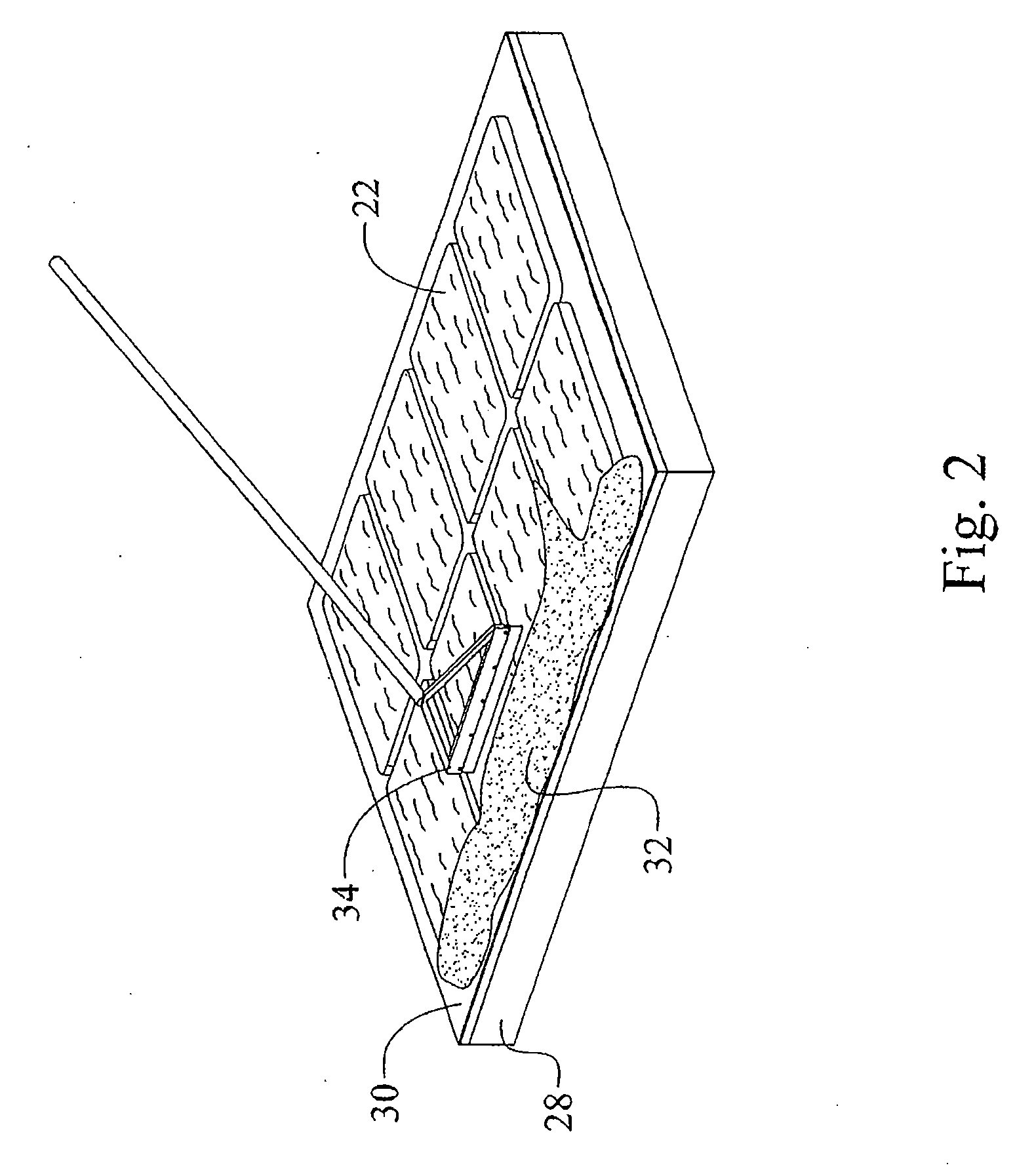Coating for architectual pieces, coated peces, and methods of making and using them
a technology of coating and peces, applied in the field of coating, can solve the problems of high labor intensity, high level of skill required, and time-consuming nature of conventional brick or stone veneer installation, and achieve the effects of reducing labor intensity, reducing labor intensity, and reducing labor intensity
- Summary
- Abstract
- Description
- Claims
- Application Information
AI Technical Summary
Benefits of technology
Problems solved by technology
Method used
Image
Examples
example 1
[0047]In an embodiment of the present invention, formulated for use on most brick, the following constituents are mixed in a heated mixer 24.
Parts by weightCellulose acetate butyrate28Di-isononyl phthalate,59Di-n-butly adipate10Epoxidized soy bean oil3
[0048]The liquid ingredients (plasticizers) are heated in a heated mixer 24 to about 300° F. (149° C.). Solids are added with slow agitation to disperse heat and evenly melt the polymer solids into the plasticizers without introducing air into the mixture. When the mixture is a clear, free-flowing liquid, it is released through a heated valve 29 at the bottom of the tank. If produced off-site, the liquid is poured into a mold or is extruded, cooled to form a solid, and cut into pellets or granules. Equipment for reducing the solid to chunks, pellets, pastilles, granules, and the like is well-known in the art and is available, for example from AB Sandvik Materials Technology, Sandviken, Sweden.
[0049]Whether the coating material is suppl...
example 2
[0052]In another example of the present invention, the following constituents are melted and mixed in a heated mixer 24:
Parts by weightCellulose acetate butyrate50Diisodecyl phthalate50Triethylene glycol2Diphenyl phosphate2Wax2
[0053]The mixed ingredients are heated in a heater / pump 26 to about 350° F., and applied in a manner similar to Example 1.
example 3
[0054]In another example of the present invention, the following constituents are melted and mixed in a heated mixer 24:
Parts by weightCellulose acetate butyrate35Di-n-butyl adipate63Epoxidized soy bean oil2
[0055]The mixed ingredients are heated in a heater / pump 26 to about 350° F., and applied in a manner similar to Example 1.
PUM
| Property | Measurement | Unit |
|---|---|---|
| softening point | aaaaa | aaaaa |
| thickness | aaaaa | aaaaa |
| air pressure | aaaaa | aaaaa |
Abstract
Description
Claims
Application Information
 Login to View More
Login to View More - R&D
- Intellectual Property
- Life Sciences
- Materials
- Tech Scout
- Unparalleled Data Quality
- Higher Quality Content
- 60% Fewer Hallucinations
Browse by: Latest US Patents, China's latest patents, Technical Efficacy Thesaurus, Application Domain, Technology Topic, Popular Technical Reports.
© 2025 PatSnap. All rights reserved.Legal|Privacy policy|Modern Slavery Act Transparency Statement|Sitemap|About US| Contact US: help@patsnap.com



